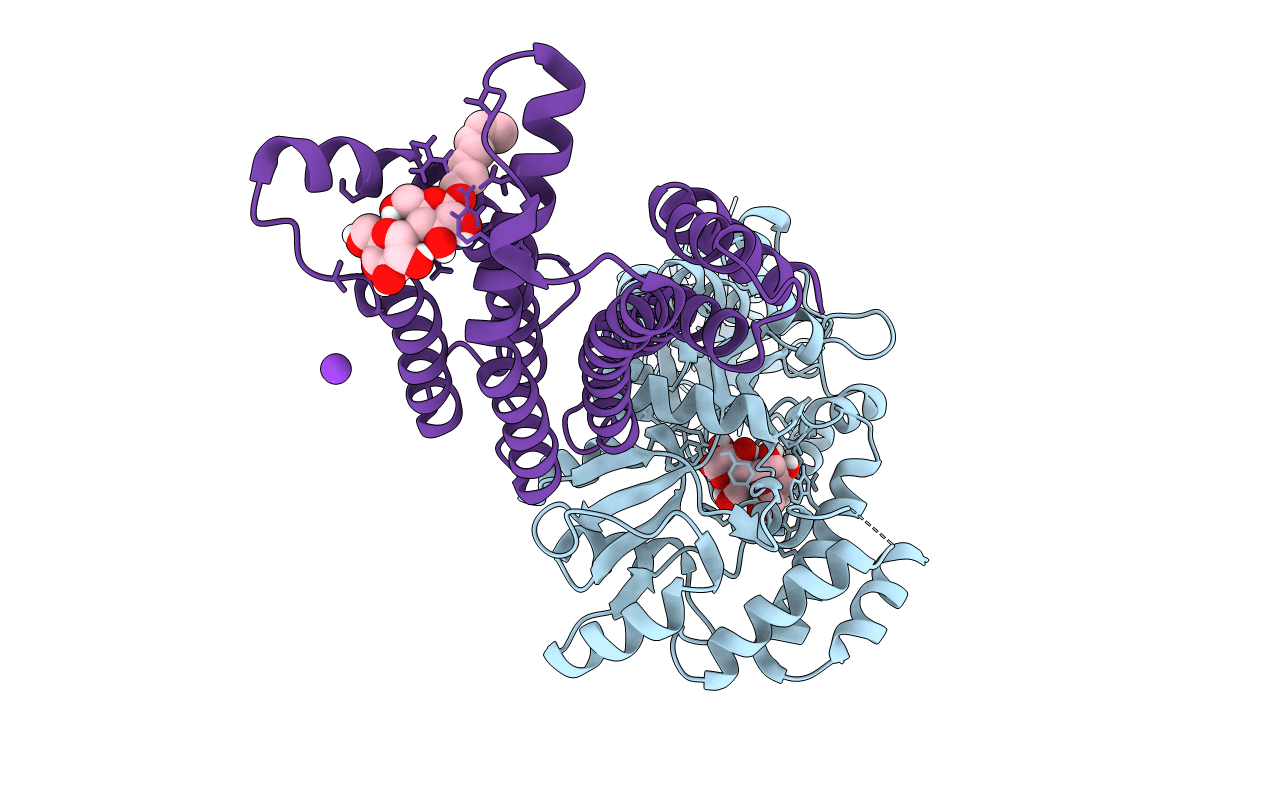
Deposition Date
2018-08-17
Release Date
2019-08-28
Last Version Date
2024-11-20
Entry Detail
PDB ID:
6HDC
Keywords:
Title:
Crystal structure of the potassium channel MtTMEM175 T38A variant in complex with a Nanobody-MBP fusion protein
Biological Source:
Source Organism:
Lama glama (Taxon ID: 9844)
Escherichia coli (strain K12) (Taxon ID: 83333)
Marivirga tractuosa DSM 4126 (Taxon ID: 643867)
Escherichia coli (strain K12) (Taxon ID: 83333)
Marivirga tractuosa DSM 4126 (Taxon ID: 643867)
Host Organism:
Method Details:
Experimental Method:
Resolution:
3.40 Å
R-Value Free:
0.29
R-Value Work:
0.27
R-Value Observed:
0.27
Space Group:
P 4 21 2


